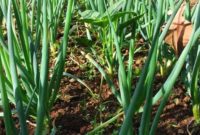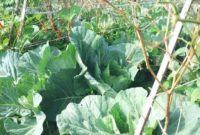Irrigation is the application of controlled amounts of water to plants at needed intervals. Irrigation helps to grow agricultural crops, maintain landscapes, and revegetate disturbed soils in dry areas and during periods of less than average rainfall. Effective irrigation will influence the entire growth process from seedbed preparation, germination, root growth, nutrient utilization, plant growth and regrowth, yield and quality.
The key to maximize irrigation efforts is uniformity. The producer has a lot of control over how much water to supply and when to apply it but the irrigation system determines uniformity. Deciding which irrigation systems is best for your operation requires a knowledge of equipment, system design, plant species, growth stage, root structure, soil composition, and land formation. Irrigation systems should encourage plant growth while minimize salt imbalances, leaf burns, soil erosion, and water loss. Losses of water will occur due to evaporation, wind drift, run-off and water (and nutrients) sinking deep below the root zone.

Proper irrigation management takes careful consideration and vigilant observation.
The value/advantages of irrigation
Irrigation allows primary producers,
- to grow more pastures and crops
- to have more flexibility in their systems/operations as the ability to access water at times when it would otherwise be hard to achieve good plant growth (due to a deficit in soil moisture) is imperative. Producers can then achieve higher yields and meet market/seasonal demands especially if rainfall events do no occur.
- to produce higher quality crops/pastures as water stress can dramatically impact on the quality of farm produce
- to lengthen the growing season (or in starting the season at an earlier time)
- to have ‘insurance’ against seasonal variability and drought.
- to stock more animals per hectare and practice tighter grazing management due to the reliability of pasture supply throughout the season
- to maximum benefits of fertilizer applications. Fertilizers need to be ‘watered into’ the ground in order to best facilitate plant growth.
- to use areas that would otherwise be ‘less productive’. Irrigation can allow farmers to open up areas of their farms where it would otherwise be ‘too dry’ to grow pasture/crops. This also gives them the capability to carry more stock or to conserve more feed.
- to have less reliance on supplementary feeding (grain, hay) in grazing operations due to the more consistent supply & quality of pastures grown under irrigation
- to improve the capital value of their property. Since irrigated land can potentially support higher crops, pasture and animal production, it is considered more valuable. The value of the property is also related to the water licensing agreements or ‘water right’.
- to cost save/obtain greater returns. The cost benefits from the more effective use of fertilizers and greater financial benefits as a result of more effective agricultural productivity (both quality and quantity) and for ‘out of season’ production are likely.
Types of Irrigation Systems
Irrigation system description
| Irrigation system | Description |
|---|---|
| Furrow systems | This system comprises a series of small, shallow channels used to guide water down a slope across a paddock. Furrows are generally straight, but may also be curved to follow the contour of the land, especially on steeply sloping land. Row crops are typically grown on the ridge or bed between the furrows, spaced from 1 meter apart. |
| Flood or border check systems | These systems divide the paddock into bays separated by parallel ridges/border checks. Water flows down the paddock’s slope as a sheet guided by ridges. On steeply sloping lands, ridges are more closely spaced and may be curved to follow the contour of the land. Border systems are suited to orchards and vineyards, and for pastures and grain crops. |
| Level basin systems | These systems differ from traditional border check or flood systems in that slope of the land is level and area’s ends are closed. Water is applied at high volumes to achieve an even, rapid ponding of the desired application depth within basins. |
| Center-pivot sprinkler systems | A center-pivot sprinkler is a self-propelled system in which a single pipeline supported by a row of mobile towers is suspended 2 to 4 meters above ground. Water is pumped into the central pipe and as the towers rotate slowly around the pivot point, a large circular area is irrigated. Sprinkler nozzles mounted on or suspended from the pipeline distribute water under pressure as the pipeline rotates. The nozzles are graduated small to large so that the faster moving outer circle receives the same amount of water as the slower moving inside. |
| Hand move sprinkler systems | Hand move sprinkler systems are a series of lightweight pipeline sections that are moved manually for successive irrigation. Lateral pipelines are connected to a mainline, which may be portable or buried. Hand move systems are often used for small, irregular areas. Hand move systems are not suited to tall-growing field crops due to difficulty in repositioning laterals. Labor requirements are higher than for all other sprinklers. |
| Solid set / fixed sprinkler systems | Solid set /fixed refer to a stationary sprinkler system. Water-supply pipelines are generally fixed (usually below the soil surface) and sprinkler nozzles are elevated above the surface. Solid-set systems are commonly used in orchards and vineyards for frost protection and crop cooling. Solid-set systems are also widely used on turf and in landscaping. |
| Travelling gun sprinkler systems | Travelling gun systems use a large sprinkler mounted on a wheel or trailer, fed by a flexible rubber hose. The sprinkler is self-propelled while applying water, travelling in a lane guided by a cable. The system requires high operating pressures, with 100 psi not uncommon. |
| Side-roll wheel-move systems | Side-roll wheel-move systems have large-diameter wheels mounted on a pipeline, enabling the line to be rolled as a unit to successive positions across the field. Crop type is an important consideration for this system since the pipeline is roughly 1 meter above the ground. |
| Linear or lateral-move systems | Linear or lateral-move systems are similar to center-pivot systems, except that the lateral line and towers move in a continuous straight path across a rectangular field. Water may be supplied by a flexible hose or pressurised from a concrete-lined ditch along the field’s edge. |
| Low-flow irrigation systems (including drip and trickle) | Low-flow irrigation systems (including drip and trickle) use small-diameter tubes placed above or below the soil’s surface. Frequent, slow applications of water are applied to the soil through small holes or emitters. The emitters are supplied by a network of main, submain, and lateral lines. Water is dispensed directly to the root zone, avoiding runoff or deep percolation and minimising evaporation. These systems are generally used in orchards, vineyards, or high-valued vegetable crops. |
Choosing an irrigation system
There is a huge diversity in the types of irrigation technologies/systems used, which is attributable to,
- Variations in soil types
- Varying topography of the land
- Availability of power sources
- Availability of water
- Sources of water
- The period of time when the system was installed
- The size of the area being irrigated
- On farm water storage capacity
- Availability of labour/financial resources
Source of irrigation water
The vast majority of irrigation water use is pumped directly from a water source (river, creek, channel, drag line, hole, dam or bore).

Irrigation scheduling
Irrigation scheduling is the process by which an irrigator determines the timing and quantity of water to be applied to the crop/pasture. The challenge is to estimate crop water requirements for different growth stages and climatic conditions.
To avoid over or under watering, it is important to know how much water is available to the plant, and how efficiently the plant can use it. The methods available to measure this include: (i) plant observation, (ii) feel and appearance of the soil, (iii) using soil moisture monitoring devices; or (iv) estimating available water from weather data.
| Plant observation: | Visible changes in plant characteristics, such as leaf colour, curling of the leaves and ultimately wilting can be useful guides to indicate plant moisture stress, and hence the need for irrigation. Productivity may be lowered, particularly if moisture depletion is allowed to the point where wilting occurs. The moisture status of plants can also be measured using sap flow sensors (used mainly for research), infra-red guns (used in the cotton industry) and pressure bombs (which measure leaf water potential). |
|---|---|
| Feel and appearance of the soil: | Visual observation and feel of the soil is used to monitor moisture levels of paddocks and hence their ability to sustain plant growth. A soil sample can be obtained by using a soil probe, auger or spade. By squeezing soil into a ball, observing the appearance of the ball and creating a ribbon of soil between the thumb and forefinger, soil moisture can be estimated. For example:
|
| Weather based data: | There are two weather – based scheduling systems used to measure the amount of water lost from a crop. These are: (i) Evaporation from an open water surface -gives some indication of crop water use (the latter is generally lower), or (ii) Historical climate data such as relative humidity, temperature, wind speed and sunshine hours. |
| Soil moisture monitoring: | Soil moisture can be measured as a suction or volume of water. This idea is applicable to how much force a plant can exert on the soil to extract the amount of water it needs for growth. Soil moisture suction can be used as a measure of plant stress and for that reason it is a handy tool for growers to use in scheduling their irrigations. Soil moisture monitoring devices include tensiometers and resistance (measure soil moisture suction) or neutron probe, EnviroScan®, Gopher®, Time Domain Reflectometry (TDR), DRW Microlink® and Aquaflex (measure soil moisture content). |
Problems
While irrigation has provided a number of important benefits the potential drawbacks of over/under watering include,
Under-watering
- Loss in market value through yield reduction
- Reduction in fruit size and quality
Over-watering
- Unwanted vegetative growth
- Losses of valuable water to the watertable
- Irrigation water travelling over soil can cause erosion. The excessive displacement of the top soil can also affect soil fertility (and hence crop yields), it may also clog drainage ditches and streams (silting), harm aquatic habitats, foul waters used for recreational activities, and increases the need for water treatments.
- Irrigation can cause pesticides, pathogens and weeds to spread during irrigation
- Cause runoff
- Increased operational costs (labour, pumping, cost of water)
- Leaching of nutrients (eg. salt, phosphorus) may lead to algal growth, salinity an nitrate build ups (poisoning) elsewhere in the catchment
- Downgraded product quality and reduced yield.
- Higher operational costs for the producer (hence, reduced profits)
- Pressue on water resources with the Increasing demand for water use by urban dwellers
